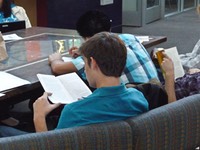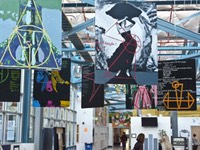Bridging the Opportunity Gap: Improving Early Childhood and Primary Grade Education
Growing up in Brooklyn, NY in the 1940’s and 50’s, I came from a home where both my parents had a limited education (some high school). Neither were readers. We did not have the current torrent of technologies to distract us (television didn’t come to our family until the 1950’s), so books, toys, games, sports, and some radio were what we primarily used for entertainment and leisure time. I remember that I read some books over and over again at a very early age, and reading became a strong habit in my early years. The local public library became a second home, and books became an essential feature of my young life.
As I observe and spend time with children growing up today who do well in school, I notice that they also are generally immersed in books and educational activities of all kinds. Their parents spend a lot of time reading to them, talking with them, answering their questions, and generally surrounding them with books and literature. Some love to do artwork. They go to museums and the zoo on a regular basis. Some have had significant experiences with the theater, going to several children’s plays a year. Television and other diversions are limited and monitored by parents. As these children enter school, they generally have a large vocabulary, have traveled and visited many local, regional, and, for some, other countries, tend to be curious, and like to read on their own. Some of my “surrogate grandchildren”, whom my wife and I sit for occasionally, are now eight and thirteen, and they all are read to and/or silently read in bed before they go to sleep.
These observations, as well as many studies by experts, lead me to believe that, if we are to bridge the “opportunity gap” and foster a society that truly supports equal opportunity, children who do not have an upbringing such as the one described above need strong educational experiences at a very early age. An essential feature of early childhood and elementary classrooms for these children is what I call “content and skills immersion”. Play by itself at this young age is important, but so is play AND learning through educational games and content area experiences in areas such as social studies, science, the arts, and mathematics. Unfortunately, the current early childhood and primary grade emphasis on reading and math skills often shortchanges the richness of learning through the content areas and immersion into scientific questions/investigation, inquiry into history and geography, and exploration with and involvement in the arts. Libraries of books from all subjects, not just fiction, need to permeate early childhood and elementary classrooms. Children often need to be able to interact and engage with their environment through asking and answering questions, meaningful field trips, “research” and inquiry activities, discussions, learning new vocabulary, classifying, conceptualizing and analyzing, drawing conclusions, and communicating orally, through visual means, and through writing dictation and writing on their own.
For example, young children can plant seeds and grow and observe plants while learning science vocabulary. In the visual arts, they can observe, discuss, and analyze artworks of famous artists, learn vocabulary such as impressionism and abstract art, and create art in the style of these artists. Children, with their teachers, can read and discuss books for their age group about historical figures and the times in which they lived. Children should have a quiet, sustained time to select and read many different types of books on their own (even if they just look at the pictures). They need to begin to conduct “research” by asking questions, finding books and other resources about a topic of interest with the help of their teachers and others in the school, having these books read to them (or figure them out on their own), discussing the books with an adult, asking questions when they don’t understand something, and dictating or writing summaries and stories about what they are learning. They can take field trips into the local neighborhood – to stores, historical sites, churches, and the like. They can even begin to make presentations to other children in order to share what they have learned!
Content and skill immersion can be enhanced by today’s technologies. Many books for young children are on line, and are orally presented as well as in written form. Adventure and historical stories can be shared on line. Children can begin to write by using computers. Tablets and other devices can help bring many engaging, interactive curricular programs right into the classroom!
“Unequal opportunity” is a serious problem in America today. Many less affluent children start with smaller vocabularies, fewer opportunities to read and discuss ideas with many adults, and fewer learning experiences that prepare students for school. Strengthening their core abilities and background knowledge at an early age, in interesting ways, should be a high priority. Content and skills immersion in all subject areas and through interdisciplinary themes is a key framework for improving the early childhood-primary grades education years. Small class sizes, coupled with strong immersion activities, will help to bridge this gap and create a learning foundation for future success. It will make a significant difference in the educational lives of children, better prepare them for successful academic work, and begin the process of giving them the “life” skills they will need as they move up through the grade levels and prepare for living in a 21st century world.

